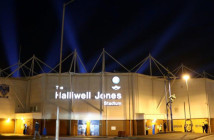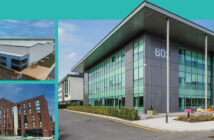Around 2,500 years ago, Greek and Egyptian merchants began travelling across the seas to purchase each other’s wares using molten silver and gold.
Having spent centuries trading goods already, they now had a currency that could be weighed, measured, valued, and used in exchanges.
Half a millennia later, the Roman empire took this idea one step further and began creating a centralized currency by minting their own coins. This allowed them to gain a monopoly on currency trading that made them vastly rich and powerful. Other empires and nations took note and did the same. 2,000 years later and this monopoly continues, with centralized banking institutions controlling money and what happens to it.
Once the scarcity of silver and gold was realised, ancient peoples moved on to other metals for minting coins and trading. In the middle ages, copper was the metal of choice, in the modern-day, it’s zinc, nickel, and tin, though coins nowadays are typically made of alloys, a mixture of different lower-value metals.
Where did forex start?
Consider the difficulties you might have suffered 500 years ago when trying to convert one foreign currency to another without some basis of exchange, common language, or data points to use. It would have been nigh on impossible, but thanks to the Dutch in Amsterdam, the problem was solved. The city became the first Forex capital as traders arrived from all over Europe to buy and sell currencies at rates that were set according to the import and export prices of goods in the port. Such an activity requires great stability and trust, and it was this stabilising of coin prices that allowed trade to flow and empires to flourish.
The problem with minting coins was that the countries with the most natural resources of metal had an unfair advantage, as they could continuously line their pockets by printing money. To combat this problem, the Gold Standard was implemented in 1875, meaning that each state could only mint currency equal to the gold reserves they owned. This meant that a currency’s value could be maintained, however, the concept didn’t last too long (more on this later).
The currency trading that had started in Amsterdam grew in popularity around the world and the major economies were regularly trading with each other (India and China joined the picture in the 19th century too). In 1867, the International Monetary System was developed and a conference was held in Paris.
In the early parts of the 20th century, Forex came to be so popular that the industry grew at least 20-fold and any sceptics who had been wary before were soon fighting their way to the front of the queue to buy some foreign currency. Before WW1 broke out, London had become the new centre of Forex and the GBP was involved in more than 50% of transactions.
How did WW1 and WW2 change everything?
When World War I came along, countries needed to print a lot of money to pay for the costs of war, and so the Gold Standard ended, meaning countries didn’t need to own the gold in reserve when minting money. The British Empire fixed the GBP against the weight of gold, as did the USA, and then other Western European countries, and eventually Russia in 1897. Before this, any time a gold or silver mine was discovered, it caused price volatility for the country in question.
During World War II, problems arose again, with a new system needing to be introduced to fund the tolls of war and an inflationary USD. At this point, the Bretton Woods system came into effect, with both Dollars and Gold acting as ‘stable’ reserves. Countries then fixed their national currencies to USD and the Dollar was fixed to gold at £35 per Oz. The International Monetary Fund (IMF) was introduced to help the system to succeed, supporting the participating countries who would peg their currencies to the US Dollar.
In 1971, the Bretton Woods system ended, with the US no longer willing to peg their currency against the weight of gold. This was known as the Nixon shock and it allowed gold to become an independent asset and the US Dollar to float on the market, open to the laws of supply and demand. In fact, it was the first time in history that currencies could only be valued in relation to each other, and so the modern Forex market as we know it was essentially born here.
By 1976, thirty years after WWII had ended, countries received an opportunity, through the newly-designed Jamaican System, to choose the exchange rate regime of their choice, from this list of three:
- ‘Free’ floating exchange Forex rates
- Limited flexible FX rates (fixed against other currencies)
- Fixed Forex exchange rates
The modern market
The US Dollar is the world’s most-traded currency, the Euro is second, the Japanese Yen is third, and the British Pound is fourth. Rather than heading to trading offices and physical brokers, most FX trading is done on digital platforms over the internet. An evolving FX landscape allows new market participants with small amounts of cash to begin trading and profiting. In 2021, FX even embraces the emergence of cryptocurrencies, suggesting that the dawn of a new financial era is among us.





2 Comments
Pingback: The History of Forex Trading – Gary Skentelbery
Pingback: The History Of Forex Trading - Gary Skentelbery - All About Corporate SEO